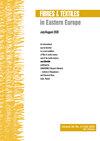服装款式的灵活设计,支持时尚行业的最小浪费理念
IF 0.9
4区 工程技术
Q3 MATERIALS SCIENCE, TEXTILES
引用次数: 0
摘要
摘要目前,服装款式的设计对MWD概念的支持较弱。它在所有多变的制造过程中都保持固定,从而增加了消费前和消费后的织物浪费。为了改善这种情况,只有在服装制造过程中,才能为每个独特的生产订单确定影响织物使用效率的结构参数的最终值。测试了四种服装款式,以了解宽度和长度的光变化如何影响织物的使用效率。即使这些参数的最小减少也可以显著节省织物。这些参数的不同值产生了略有不同的图案块形状,并为创造更高效的生产标记提供了大量新的可能性。作者找到了一种方法来提高服装设计过程的效率,并在服装设计和制造阶段之间建立一座“虚拟桥梁”。这两项改进都可以带来巨大的好处:减少织物的使用和产品价格,以及减少消费前和消费后的纺织材料浪费。本文章由计算机程序翻译,如有差异,请以英文原文为准。
Flexible Design of Garment Styles to Support the Minimal Waste Concept in the Fashion Industry
Abstract Currently, the design of garment styles is weakly supporting the MWD concept. It is kept fixed during all its very changeable manufacturing process, thereby increasing pre- and post-consumer fabric wastes. To improve the situation the final values of construction parameters which influence fabric use efficiency should be determined for every unique production order only in the garment manufacturing process. Four garment styles were tested to see how light changes in their width and length influence fabric use efficiency. Even minimal reduction of these parameters can give noticeable fabric savings. Different values of these parameters create slightly different shapes of pattern pieces, and with it, give a huge number of new possibilities to create more efficient production markers. The authors found a way how to make the garment designing process more efficient, as well as, to create a “virtual bridge” between garment designing and the manufacturing phase. Both improvements could give serious benefits: reduced fabric use and product price, as well as, reduced pre- and post-consumer textile material wastes.
求助全文
通过发布文献求助,成功后即可免费获取论文全文。
去求助
来源期刊

Fibres & Textiles in Eastern Europe
工程技术-材料科学:纺织
CiteScore
1.60
自引率
11.10%
发文量
12
审稿时长
13.5 months
期刊介绍:
FIBRES & TEXTILES in Eastern Europe is a peer reviewed bimonthly scientific journal devoted to current problems of fibre, textile and fibrous products’ science as well as general economic problems of textile industry worldwide. The content of the journal is available online as free open access.
FIBRES & TEXTILES in Eastern Europe constitutes a forum for the exchange of information and the establishment of mutual contact for cooperation between scientific centres, as well as between science and industry.
 求助内容:
求助内容: 应助结果提醒方式:
应助结果提醒方式:


